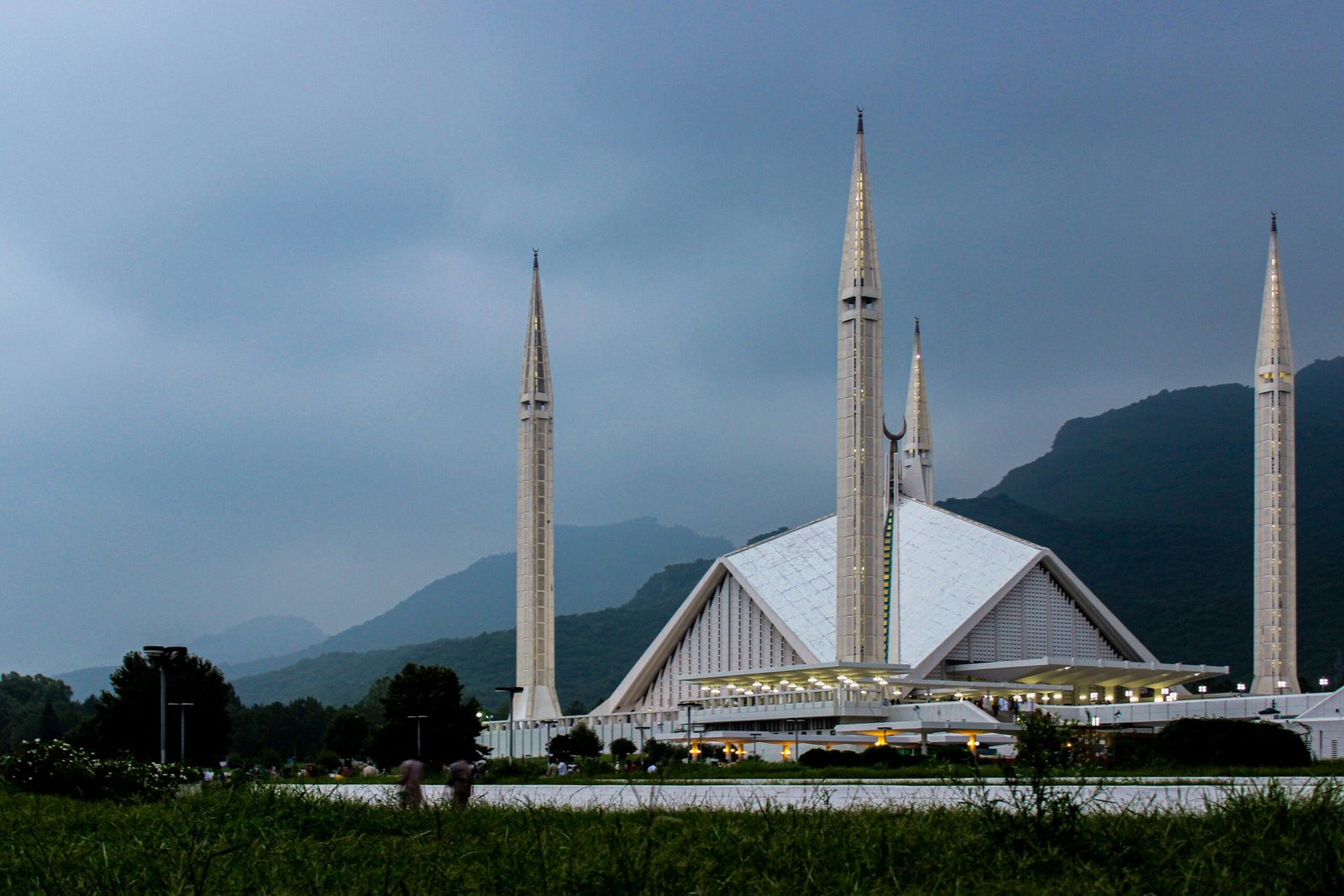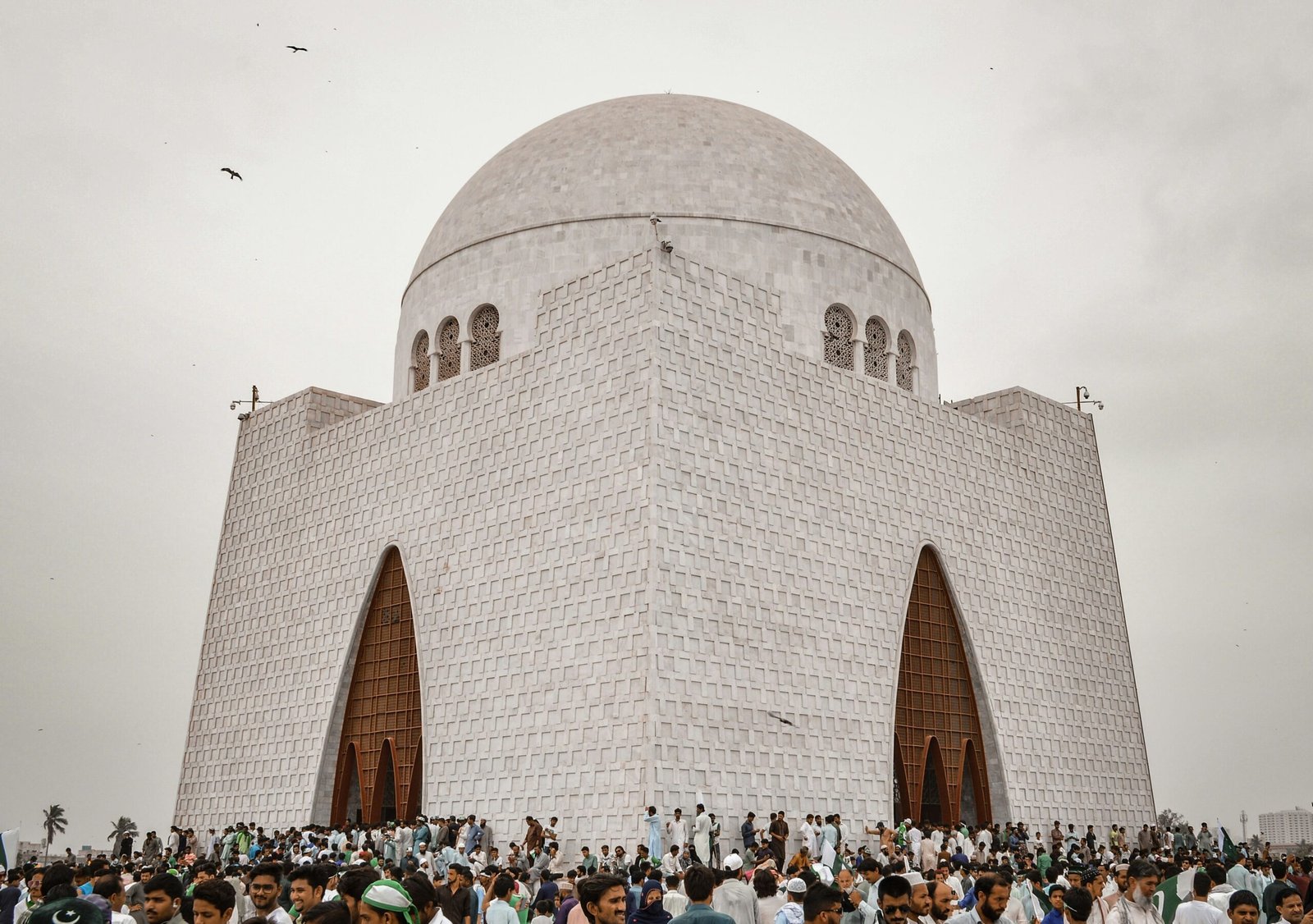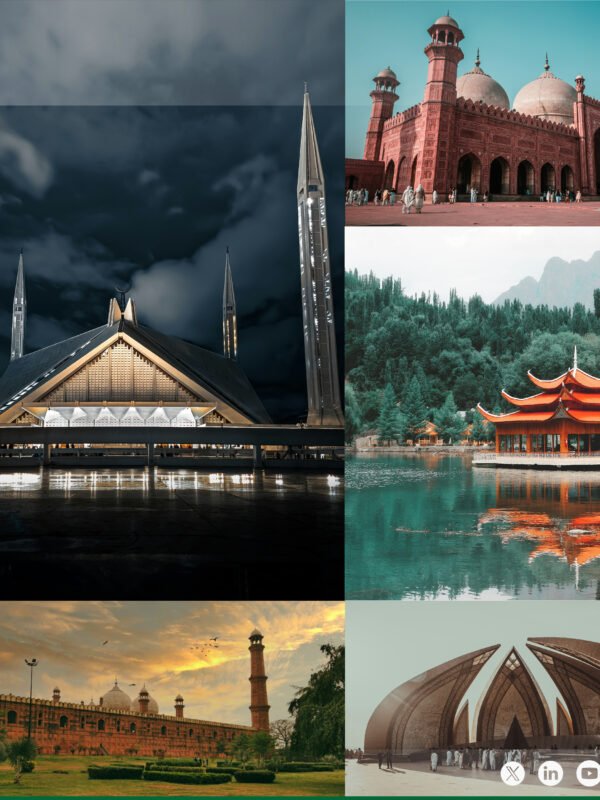Introduction
Pakistan is a land of breathtaking diversity, where nature, history, and culture come together to create unforgettable experiences. From the towering peaks of the Karakoram Range and the serene beaches of the Arabian Sea to the ancient ruins of Mohenjo-Daro and the bustling streets of Lahore, the country offers something for every traveler. Its varied landscapes include lush valleys, deserts, forests, and rivers, making it a dream destination for nature lovers and adventure seekers alike.
For first-time travelers, exploring these must-visit places in Pakistan is more than a journey—it’s an opportunity to experience centuries of history, vibrant traditions, and warm hospitality. Whether you’re interested in cultural exploration, outdoor adventures, or culinary delights, this guide highlights the top destinations that should be on your travel itinerary. Prepare to embark on a journey that promises to be as diverse as the country itself.
2. Why Visit Pakistan?
Pakistan is a country of remarkable contrasts and natural beauty, making it one of the most rewarding destinations for travelers. Its diverse landscapes range from snow-capped mountains in the north to golden deserts, lush plains, and pristine beaches, offering a wide array of breathtaking scenery and outdoor activities. This variety ensures that no two experiences in the country are ever the same.
The nation’s rich cultural and historical heritage adds another layer of depth to any journey. Visitors can explore ancient ruins from the Indus Valley Civilization, Mughal-era forts and mosques, and traditional markets where age-old craftsmanship still thrives. Combined with warm hospitality and unique local traditions, Pakistan’s culture leaves a lasting impression on every visitor.
Adventure enthusiasts can enjoy trekking in the Karakoram and Himalayan ranges, while food lovers will be delighted by the country’s vibrant culinary offerings, including flavors from Lahore’s food streets and seafood specialties in Karachi. Cultural explorers can immerse themselves in the history and daily life of cities like Peshawar and Multan.
This guide to the must-visit places in Pakistan is designed to help first-time travelers optimize their trip by providing insights into the country’s top destinations and experiences. Whether you’re seeking outdoor adventures, historical landmarks, or local cuisine, this guide ensures that you make the most of your visit.
3. Top 10 Must-Visit Places in Pakistan
For first-time travelers, Pakistan’s top destinations offer a perfect mix of natural wonders, historical landmarks, and cultural experiences. Here’s a curated list of the must-visit places in Pakistan that you should explore on your journey.
1. Lahore – The Cultural Heart of Pakistan
Lahore is a vibrant city known for its rich history, Mughal architecture, and culinary delights. It’s often referred to as the “Heart of Pakistan” due to its cultural and historical significance.
- Key Attractions: Lahore Fort, Badshahi Mosque, Shalimar Gardens, and the Walled City.
- Don’t Miss: The traditional Lahori food street and the Wagah Border Ceremony.
2. Hunza Valley – Nature’s Paradise
Hunza Valley is a breathtaking destination surrounded by the Karakoram Range. Known for its serene beauty and warm hospitality, it’s a haven for nature lovers and adventure seekers.
- Key Attractions: Altit & Baltit Forts, Attabad Lake, and Passu Cones.
- Activities: Boating on Attabad Lake, hiking to scenic viewpoints, and exploring ancient forts.
3. Skardu – Gateway to Majestic Peaks
Skardu is the starting point for treks to some of the world’s highest mountains, including K2. With its crystal-clear lakes and high-altitude deserts, it’s a dream for adventure travelers.
- Key Attractions: Deosai National Park, Shangrila Resort, and Satpara Lake.
- Activities: Trekking, camping, and exploring the Deosai Plains.
4. Islamabad – The Green Capital
Islamabad, Pakistan’s capital, is known for its modern infrastructure, green spaces, and serene environment. It offers a perfect balance of urban life and natural beauty.
- Key Attractions: Faisal Mosque, Daman-e-Koh, Lok Virsa Museum, and Monal Restaurant.
- Activities: Hiking the Margalla Hills and enjoying panoramic views of the city.


5. Swat Valley – Switzerland of the East
Swat Valley is often called the “Switzerland of the East” due to its lush green valleys, snow-covered peaks, and charming villages. It’s a favorite destination for skiing and trekking.
- Key Attractions: Mingora, Malam Jabba (ski resort), and Kalam Valley.
- Activities: Skiing, trekking, and visiting local markets.
6. Naran & Kaghan Valley – Alpine Beauty
Naran and Kaghan Valley are known for their scenic lakes, waterfalls, and lush green landscapes, making them popular summer destinations.
- Key Attractions: Saif-ul-Muluk Lake, Lulusar Lake, and Babusar Top.
- Activities: Boating on Saif-ul-Muluk Lake, fishing, and hiking to scenic viewpoints.
7. Chitral & Kalash Valleys – Cultural Richness
Chitral, along with the Kalash Valleys, is famous for its cultural diversity and unique traditions. The Kalash people’s festivals and lifestyle are a major draw for tourists.
- Key Attractions: Kalash Villages, Shandur Polo Ground, and Chitral Fort.
- Activities: Attending Kalash festivals, trekking, and exploring historical sites.
8. Karachi – The City of Lights
Karachi is Pakistan’s largest city and economic hub, offering a mix of historical landmarks, urban life, and coastal attractions.
- Key Attractions: Clifton Beach, Mazar-e-Quaid, Mohatta Palace, and Port Grand.
- Activities: Relaxing at the beach, shopping in local markets, and enjoying the city’s vibrant nightlife.


9. Gwadar – Coastal Beauty
Gwadar, located along the Arabian Sea, is a scenic port city known for its beaches, unique rock formations, and economic significance as a trade hub.
- Key Attractions: Gwadar Port, Hammerhead, and Astola Island.
- Activities: Beach activities, boat tours, and exploring the rugged coastline.
10. Mohenjo-Daro (Sindh) – Ancient Civilizations
Mohenjo-Daro is a UNESCO World Heritage Site that takes you back to the ancient Indus Valley Civilization, offering a glimpse into one of the world’s earliest urban settlements.
- Key Attractions: The ruins of Mohenjo-Daro and its archaeological museum.
- Activities: Learning about ancient history and archaeology through guided tours.
These top destinations highlight the diversity of experiences in Pakistan, making them essential for anyone exploring the must-visit places in Pakistan for the first time. Whether you’re drawn to history, adventure, or natural beauty, this list has something for everyone.
4. Best Time to Visit These Places
When planning your visit to the must-visit places in Pakistan, understanding the seasons and their impact on different regions is essential to optimize your travel experience. Each season highlights the beauty of specific destinations, offering unique opportunities for exploration.
Spring (March to May) – Ideal for Hunza, Skardu, and Kaghan Valley
During spring, the northern regions bloom with colorful flowers and lush greenery. The moderate temperatures make it perfect for sightseeing and outdoor adventures.
- Recommended Places:
- Hunza Valley: Enjoy the apricot and cherry blossoms.
- Skardu: Trek through Deosai Plains before the heavy summer rush begins.
- Kaghan Valley: Visit Saif-ul-Muluk Lake with clear, scenic views.
Activities: Hiking, boating, and exploring natural wonders without the summer crowds.
Summer (June to August) – Most Accessible for Swat, Naran, and Chitral
Summer is the peak season for northern Pakistan, as the snow has melted, and all roads and passes are open. This is the best time for adventure enthusiasts and nature lovers.
- Recommended Places:
- Swat Valley: Explore Mingora, Malam Jabba, and Kalam Valley.
- Naran & Kaghan: Ideal for visits to Lulusar Lake and Babusar Top.
- Chitral & Kalash Valleys: Experience Kalash festivals and cultural immersion.
Activities: Trekking, rafting, fishing, and cultural exploration.
Autumn (September to November) – Best for Cultural Exploration in Lahore and Islamabad
Autumn brings cooler temperatures and golden landscapes, making it the perfect time for exploring cultural and historical landmarks in cities and valleys.
- Recommended Places:
- Lahore: Visit historical sites like Lahore Fort and Shalimar Gardens.
- Islamabad: Enjoy the views from Daman-e-Koh and Margalla Hills without the summer heat.
- Hunza Valley: Witness the valley’s transformation into hues of orange and gold.
Activities: Cultural exploration, city tours, and photography.
Winter (December to February) – Perfect for Skiing and Coastal Trips
Winter transforms the northern areas into a snowy wonderland, while the southern coastal regions offer mild, pleasant weather ideal for beach lovers.
- Recommended Places:
- Malam Jabba (Swat Valley): Pakistan’s premier ski resort.
- Gwadar: Enjoy the pristine beaches and marine activities.
- Karachi: Perfect for exploring urban attractions and Clifton Beach.
Activities: Skiing, snowboarding, and beach relaxation.
5. Essential Travel Tips for First-Time Visitors
Traveling to the must-visit places in Pakistan is an exciting adventure, but it’s important to be well-prepared to ensure a smooth and enjoyable experience. Here are some essential tips for first-time travelers:
1. Pack According to the Weather and Destination
Pakistan’s diverse geography means that temperatures can vary drastically depending on the region and season.
- For Northern Areas (Hunza, Skardu, Naran): Pack warm clothes, jackets, and trekking gear, especially if you’re visiting during winter or spring.
- For Coastal Areas (Karachi, Gwadar): Light, breathable clothing and sunscreen are essential.
- City Travel (Lahore, Islamabad): Comfortable walking shoes and layers are ideal for city exploration.
Tip: Always carry a raincoat or umbrella, as the weather can be unpredictable, especially in mountainous regions.
2. Learn Basic Urdu Phrases for Better Communication
While English is widely understood in major cities, learning basic Urdu phrases will help you communicate better in rural and remote areas.
- Greetings: Assalam-o-Alaikum (Hello)
- Thank You: Shukriya
- How Much?: Kitna hai?
- Where is this place?: Yeh jagah kahan hai?
Tip: Locals appreciate the effort and are more likely to help you if you try to speak their language.
3. Respect Local Customs and Traditions
Pakistan is a culturally diverse and conservative country, so it’s important to be mindful of local customs and etiquette.
- Dress modestly: Covering shoulders and knees is generally expected, especially in rural areas and religious sites.
- Remove shoes: Always remove your shoes when entering mosques or religious places.
- Respect local customs: Ask for permission before taking photos of people or places of cultural importance.
Tip: Observe and follow the behavior of locals to avoid any unintentional offense.
4. Stay Updated on Travel Advisories, Especially for Remote Areas
Some areas in the northern and western regions may have travel restrictions or safety concerns due to changing weather or political conditions.
- Check updates: Monitor travel advisories from local authorities or tourism offices before planning your trip.
- Emergency contacts: Keep contact numbers of local police, hospitals, and your embassy in case of emergencies.
- Hire local guides: For trekking or remote areas like Chitral and Deosai, hiring a local guide ensures safety and enhances your travel experience.
Tip: Always inform someone about your travel plans, especially if you’re venturing into remote areas.
Also See:Explore the Street Food of Lahore
6. Local Cuisine to Try During the Trip
One of the most enjoyable aspects of visiting the must-visit places in Pakistan is indulging in the country’s rich and diverse cuisine. Each region has its own specialties that reflect local culture, geography, and flavors. Here’s a guide to the must-try dishes during your trip:
1. Lahore: The Food Capital of Pakistan
Lahore’s food scene is vibrant and offers a mix of traditional dishes and street food.
- Nihari: A slow-cooked stew made with tender beef or mutton, served with naan.
- Karahi: A rich and flavorful curry cooked with chicken or mutton, onions, and spices.
- Halwa Puri: A traditional breakfast dish consisting of semolina halwa, deep-fried puri bread, and spicy chickpea curry.
Tip: Visit Gawalmandi Food Street or Lakshmi Chowk to experience authentic Lahori cuisine.
2. Skardu & Hunza: Mountain Flavors and Organic Produce
In the northern areas, you’ll encounter dishes that reflect the simplicity and purity of the region’s produce.
- Chapshuro: A meat-stuffed bread filled with minced beef or yak meat, onions, and spices.
- Fresh Apricots: Hunza’s famous apricots are known for their sweetness and organic quality.
- Mamtu (Dumplings): Found in Skardu, these steamed dumplings are filled with minced meat and onions.
Tip: Don’t miss the opportunity to try home-cooked meals from local families.
3. Karachi: The Culinary Hub
Karachi offers a diverse blend of cuisines, reflecting its position as a melting pot of cultures.
- Biryani: The city’s signature dish, made with fragrant rice, meat, and aromatic spices.
- Seafood: Fresh seafood dishes such as fried fish, prawns, and crabs are widely available.
- Chai at Local Dhabas: Karachi’s tea culture is an experience in itself, with numerous roadside dhabas offering their own versions of strong, sweet chai.
Tip: Stop by Burns Road for a street food tour or visit Port Grand for upscale dining.
4. Swat: Fresh Mountain Delicacies
Swat Valley is known for its locally sourced trout and lamb dishes.
- Fresh Trout: Grilled or fried trout from the Swat River is a must-try delicacy.
- Lamb Dishes: Traditional lamb karahi and lamb chops are popular in the region.
- Local Honey: Swat’s organic honey is highly prized and makes for a great souvenir.
Tip: Visit the local markets in Mingora and Kalam for fresh produce and snacks.
5. Chitral: Traditional and Hearty Dishes
Chitral’s cuisine reflects its mountainous setting and cultural influences from neighboring regions.
- Chitrali Kababs: Skewered minced meat marinated with local spices and grilled to perfection.
- Local Bread: Often served with meat dishes, this flatbread is a staple of Chitrali meals.
- Garam Chashma Trout: Sourced from the hot springs, this trout is a unique and flavorful dish.
Tip: Try these dishes during your visit to Kalash Valleys or while attending a local festival.
7. Sustainability and Responsible Travel Tips
Traveling to the must-visit places in Pakistan is an incredible experience, but it comes with the responsibility of preserving the natural beauty and cultural heritage of the region. By following these sustainability tips, you can ensure your trip is environmentally friendly and benefits local communities.
1. Avoid Littering, Especially in Natural and Cultural Heritage Sites
Pakistan’s scenic landscapes and historical landmarks attract tourists, but littering poses a major threat to their preservation.
- Leave no trace: Always carry a reusable bag to store your waste until you find a proper disposal site.
- Pack out what you pack in: Make sure to collect and take back all your garbage, including food wrappers, plastic bottles, and tissues.
Tip: Participate in clean-up drives if you’re visiting popular tourist spots such as Hunza or Naran.
2. Support Local Businesses, Guides, and Handicrafts
Contributing to the local economy ensures that communities thrive alongside tourism.
- Stay at locally owned hotels or homestays: This provides locals with income and helps you gain a more authentic experience.
- Hire local guides: They know the region’s history and hidden spots better than anyone else.
- Buy local handicrafts: Support artisans by purchasing handmade products such as shawls, carpets, jewelry, and woodwork.
Tip: Visit small shops and avoid large commercial outlets to maximize the positive impact on local businesses.
3. Respect Wildlife and Natural Habitats
Pakistan is home to diverse wildlife, especially in regions like Deosai National Park and Chitral.
- Observe from a distance: Never feed or disturb animals, as it can disrupt their natural behaviors.
- Stick to designated paths: Stay on marked trails to avoid damaging fragile ecosystems.
- Avoid collecting plants or natural souvenirs: This can harm biodiversity.
Tip: Carry binoculars and a camera to enjoy wildlife watching without disturbing the environment.
4. Limit Plastic Usage and Dispose of Waste Responsibly
Plastic pollution is a major issue globally, and reducing single-use plastics during your trip can make a big difference.
- Carry a reusable water bottle: Refill it at safe water stations or hotels instead of buying plastic bottles.
- Use cloth or canvas bags: Avoid plastic shopping bags by using eco-friendly alternatives.
- Dispose of waste properly: If you can’t find a proper disposal bin, carry your waste with you until you do.
Tip: Choose accommodations that practice eco-friendly waste disposal and recycling.
8. Conclusion
Pakistan is a land of incredible diversity, offering a perfect blend of natural beauty, cultural richness, and historical significance. The must-visit places in Pakistan highlighted in this guide showcase the country’s vast potential as a travel destination. From the majestic mountains of Hunza and Skardu to the historical charm of Lahore and the coastal beauty of Gwadar, every destination brings a unique experience that caters to all types of travelers.
Nature lovers can enjoy trekking and camping in the northern regions, while cultural explorers can immerse themselves in the vibrant traditions of cities like Chitral and Lahore. History buffs will be captivated by the ancient ruins of Mohenjo-Daro, and food enthusiasts will savor the diverse culinary offerings across the country.
For first-time travelers, Pakistan is more than just a destination—it’s a journey filled with unforgettable memories, warm hospitality, and diverse adventures. As you plan your trip, remember to respect local customs, travel responsibly, and take time to appreciate the incredible beauty of each place.
Start packing your bags and get ready to explore the must-visit places in Pakistan—a country that promises to leave you with stories worth sharing and memories to last a lifetime.
9. FAQs
1. Which is the best place to start for first-time travelers?
Lahore is an excellent starting point, as it offers a mix of culture, history, and modern amenities. Visitors can explore Mughal-era landmarks, enjoy traditional food, and experience the vibrant energy of the city. From here, it’s easy to connect to other major destinations across the country.
2. Is Pakistan safe for first-time travelers?
Yes, many areas like Lahore, Islamabad, Hunza, Skardu, and Naran are considered safe for tourists. The locals are known for their hospitality and often go out of their way to help travelers. However, it’s advisable to stay updated on travel advisories, especially if planning to visit remote regions.
Safety Tips:
- Travel with a local guide in remote areas.
- Follow local customs and respect cultural norms.
- Keep important documents, such as your passport, secure.
3. What is the estimated budget for a trip to these places?
The budget depends on your travel style, but budget travelers can expect to spend around PKR 5,000-8,000 per day. Here’s a breakdown of typical expenses:
- Accommodation: PKR 1,500-3,000 per night (budget hotels or guesthouses)
- Meals: PKR 500-1,000 per day (local eateries and street food)
- Transportation: PKR 1,000-2,000 per day (buses, shared taxis)
- Activities and Sightseeing: PKR 1,000-2,000 per day (entry tickets, guides)
For mid-range travelers, the budget may range between PKR 10,000-15,000 per day, while luxury travelers may spend PKR 20,000+.
Tip: Traveling in groups can help reduce individual expenses, especially for transportation and accommodation.
By keeping these FAQs in mind, you can better plan your visit to the must-visit places in Pakistan and ensure a comfortable, safe, and budget-friendly experience.

